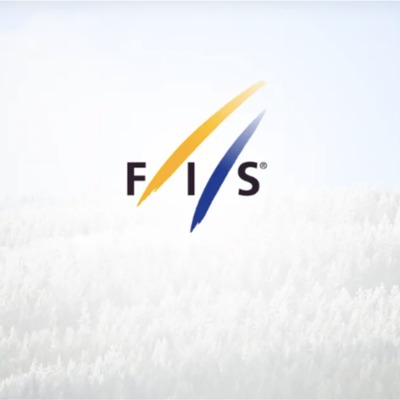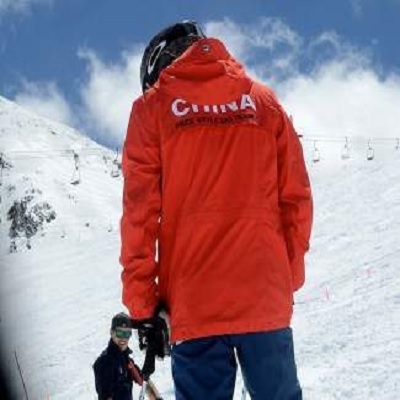FIS Explainer - Summer Inspections

From May to October, the FIS World Cup venues for the following season undergo inspections and site visits with the FIS competition management on location to analyse the previous competitions, discuss the framework and details of the events to be held in the upcoming winter.
The main goal of the inspection visits is to ensure a thorough preparation of all aspects of the event and therefore all the key stakeholders involved with the organisation are on site including the National Ski Association representatives and all key operational members of their Organising Committee, the host broadcaster and television rights holder as well as service providers.
The key goal is to prepare the best possible show for the on-site spectators and television viewers, while maintaining all safety precautions and ensure a smooth event flow. In addition to the detailed technical set-up and preparation aspects of the competition courses, tracks and hills, other areas include checking various facilities, broadcast aspects and promoting tourism on the slopes and engaging with spectators. Not all inspections are the same; it depends on the needs and experience of the venue in question and any specific areas of attention.
In the traditional venues only the details are discussed. On the other hand, there are locations where it is necessary to start from the very first step, such as, the Chinese venues that will host the 2022 Olympics.
The first week of September, the Women World Cup race director, Peter Gardol, with his team has planned to visit five venues in a row starting with Sestriere.
One Giant Slalom and one Parallel event have been scheduled in Sestriere respectively for Saturday 18th and Sunday 19th of January 2020.
The FIS team, together with Infront, FISI representatives and Gualtiero Brasso, president of the Local Organizing Committee, examined in detail all the operational aspects and they defined the guidelines to follow. It has been decided to take a cue from the successful format of the previous World Cup event in 2016. The work team inspected the race slope, Kandahar Giovanni Alberto Agnelli, and all the other locations that will be involved in the event itself.
"I am satisfied with this day of work that was certainly very fruitful - said Gualtiero Brasso - and this represents a significant milestone in the organization of the event. The collaboration with FIS and all the other stakeholders involved is crucial for the success of the event. "
The West Europe Alps tour for the Fis delegation moved on to Courchevel and together with the Local Organising Committee and Infront inspected the slope that will host the World Cup Giant Slalom on the 17th December 2019.
The Emile-Allais slope has benefited from a summer remodelling with an extension of 70 meters and more marked terrain movements that make the final part of the race more attractive. The snow making system has been modernized and adapted to the needs and the fibre network has been completely rebuilt on the lower part of the track. All these works are part of the construction of the new building of the Club des Sports de Courchevel.
On the other side of the valley in Val D’Isere, the Local Organising Committee has been also waiting for the Fis Team to inspect the Oreiller-Killy slope with the new Club des Sport Director, Ingrid Jacquemod. The former French alpine skier, six World Cup podium finishes, including a win in Santa Caterina’s World Cup and a bronze medal at Bormio’s World Championship in 2005, has been familiar with the club since her very beginning skiing career. Ingrid succeeded Vincent Jay in this new role and her first challenge will be organizing the next “Critérium de la Première neige”.
Few but great changes have been made on the race slope, included a new gondola and a great improvement of the snow making system with a new entire line of snowmakers performing with a HKD Technology that will provide lower consumption, better performance and snow production in high temperatures.
February next year, La Thuile, Italy, will host the Audi Fis World Cup for the second time after the successful edition of 2016. This time the Franco Berthod’s slope will show up with a SuperG and Alpine Combined race respectively February 29th and March 1st.
During the inspection made with the Local Organising Committee the starting point of both races have been defined and they also checked the safety conditions which is always a crucial part of the inspections. The finish area will be larger than the past edition, the grandstand area has been expanded, for this reason some measurements have been taken with the aim to draw the finish area as likely as possible.
To finish the week, the FIS Delegation arrived in Crans Montana where the menu for the next season will include two European Cup Downhill races (15-16 of February) and two World Cup races with one Downhill and one Alpine Combined (22-23 of February).
The inspection was led by Peter Gerdol and Jordi Pujol (Women European Cup coordinator ), Marius Robyr, president of the Crans-Montana Organizing Committee together with the Télévision Suisse Romande RTS, official broadcaster of Crans-Montana’s World Cup, and Swiss-Ski.
The key points of Crans Montana inspection have been: TV camera positions, start and finish area definitions, rescues organisations, teams accommodations and awards and bib draw ceremonies in details.
These are just a few of the aspects that gives to the venues the famous green light to organise a World Cup event.














